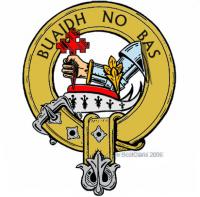
Clan MacDougall
A Gaelic generalisation when describing the Viking invaders was by colouring, Finn Ghall for fair stranger and Dubh Ghall for a dark stranger. Dubh Ghall was the descriptive name given to the eldest son of King Somerled.
Somerled’s father-in-law was Olaf, King of man and when Somerled died in 1164 Dougall became senior King of Dalriada. Duncan MacDougall of Argyll was mentioned in records of 1244 so by this time the name had established into a clan.
Chiefs descending from Dougall built themselves the two great castles on the shores of Loch Linnhe in Lorne, Dunstaffnage and Dunollie. Also on the mainland they built Duntrune. On the islands they built Aros, Coeffin, Dunchonnel and Cairnburgh.
They also built Ardchattan Priory, burial ground of the MacDougall chiefs until 1737. It was Ewan who endorsed most of these constructions.
Ewan had chosen to keep his island possessions from his King in Norway and his properties on the mainland he tried to keep from the King of the Scots. When King Haakon of Norway arrived with a huge fleet off the coast of Oban for a planned invasion in 1263, Ewan declined to help but surrendered his islands to him.
Then, knowing that to remain neutral would be a bad position however the battle ended, he chose to attack some of the Norse fleet. After Haakon’s defeat in the sea-battle of Largs his fleet were in disarray and he died in Orkney, trying to return home. Three years later Norway returned all the Hebrides to Scotland.
Alistair MacDougall married the sister of John Comyn, Scotland’s most powerful man. John’s son, the Red Comyn, was next in line as King of Scotland after the Balliols.
But this was the time when Bruce made his bid for the Crown. Bruce slew the Red Comyn at the altar rails in Dumfries and the MacDougalls entered into the feud which ended in the utter destruction of the Comyns and the loss of the MacDougalls' islands to Bruce.







